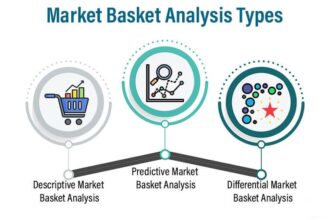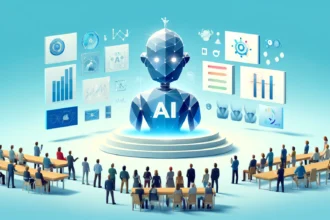- How to Automate Client Follow-Up Emails with AI Technology for Better Business Growth
- What Are Client Follow-Up Emails?
- Why Automate Follow-Up Emails?
- How AI Transforms Follow-Up Email Automation
- Step-by-Step Guide to Automate Client Follow-Up Emails Using AI
- 1. Choose the Right AI-Powered Email Automation Tool
- 2. Collect and Organize Client Data
- 3. Set Up Automated Email Sequences
- 4. Leverage AI-Powered Personalization
- 5. Optimize Email Timing with AI
- 6. Use AI-Generated Content
- 7. Monitor and Improve Performance
- 8. Integrate AI with Other Business Tools
- User also read: 5 Powerful Email List Growth Tactics That Still Work in 2025
- Tips for Success When Using AI to Automate Follow-Up Emails
- Conclusion
How to Automate Client Follow-Up Emails with AI Technology for Better Business Growth
In today’s digital world, staying connected with clients is essential for business growth. But with busy schedules and multiple clients, sending follow-up emails can become time-consuming. That’s where AI comes in. Automating client follow-up emails using AI can save you time, improve communication, and boost your sales. In this guide, I will explain how to set up AI-powered email automation that helps you stay in touch with your clients effortlessly.
What Are Client Follow-Up Emails?
Client follow-up emails are messages sent after an initial interaction or transaction. These emails aim to nurture the client relationship, gather feedback, offer support, or promote new services. Well-crafted follow-up emails can lead to increased sales, better customer loyalty, and more referrals.
Why Automate Follow-Up Emails?
Automation offers several benefits:
- Time-saving: Save hours each week by automating routine follow-ups.
- Consistency: Ensure every client receives timely and personalized messages.
- Scalability: Manage a large customer base without extra effort.
- Improved Engagement: Send relevant, personalized messages based on client behavior.
- Better Conversion Rates: Nurture leads more effectively with timely follow-ups.
How AI Transforms Follow-Up Email Automation
Artificial Intelligence enables smarter, more personalized email communication. Here’s how AI enhances follow-up email automation:
- Personalization at Scale: AI analyzes client data to craft personalized messages without manual effort.
- Timing Optimization: AI determines the best times to send emails for higher open and response rates.
- Behavior Tracking: AI monitors client interactions to trigger relevant follow-up emails automatically.
- Content Generation: AI tools can generate and optimize email content based on the recipient’s preferences.
- Spam Avoidance: AI helps craft emails that are less likely to be marked as spam.
Step-by-Step Guide to Automate Client Follow-Up Emails Using AI
1. Choose the Right AI-Powered Email Automation Tool
Start by selecting a reliable AI-driven email marketing platform. Popular options include:
- Mailchimp with AI features
- HubSpot CRM
- ActiveCampaign
- Sendinblue
- Drip
Look for features like personalization, automation workflows, AI analytics, and integration capabilities.
2. Collect and Organize Client Data
AI tools need data to personalize emails effectively. Gather information such as:
- Client names
- Purchase history
- Interaction history
- Preferences
- Demographics
Organize this data within your CRM or email platform to help AI generate targeted content.
3. Set Up Automated Email Sequences
Design a follow-up sequence that aligns with your sales funnel. For example:
- Welcome email immediately after signup
- Follow-up asking for feedback after purchase
- Offer-based emails after a certain period
- Re-engagement emails if clients become inactive
Use your chosen AI platform to create these sequences and set triggers based on client actions or time delays.
4. Leverage AI-Powered Personalization
Utilize AI features to personalize each email. For example:
- Use AI to insert the client’s name and relevant product or service details
- Tailor email content based on past interactions
- Recommend products or services based on previous purchases
This level of personalization helps build trust and increases response rates.
5. Optimize Email Timing with AI
AI tools can analyze client data to determine the best times to send emails. They can automatically adjust sending times for each recipient based on their activity patterns, ensuring your email messages are more likely to be opened and read.
6. Use AI-Generated Content
Some platforms offer AI content creation tools that can draft email copy for you. You can use these to generate ideas or even full email drafts that you can customize further.
7. Monitor and Improve Performance
AI systems continuously analyze email campaign data. Use insights such as open rates, click-through rates, and responses to refine your follow-up sequences. Adjust your messages and timing based on AI suggestions to improve engagement.
8. Integrate AI with Other Business Tools
For seamless automation, connect your AI email platform with your CRM, sales software, and analytics tools. This integration ensures data flows smoothly, and follow-up emails are sent accurately based on complete customer information.
User also read: 5 Powerful Email List Growth Tactics That Still Work in 2025
Tips for Success When Using AI to Automate Follow-Up Emails
- Keep your emails clear and concise.
- Use a friendly and professional tone.
- Test different subject lines and email content.
- Respect customer privacy and comply with data protection laws.
- Regularly review your automation workflows for improvements.
- Personalize emails as much as possible to build rapport.
Conclusion
Automating client follow-up emails with AI is a game-changer for businesses wanting to grow. It saves time, improves communication, and helps nurture stronger client relationships. By choosing the right tools, organizing your data, and utilizing AI-driven personalization and timing, you can turn routine follow-ups into powerful sales and marketing opportunities.
Start exploring AI-based email automation today and watch your customer engagement and sales grow.
Image source: Helloyubo.com






